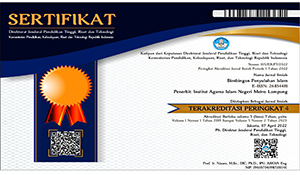FENOMENOLOGI WANITA KARIER DALAM MEMAKNAI KOMUNIKASI KELUARGA DI KABUPATEN KUNINGAN
DOI:
https://doi.org/10.32332/jbpi.v1i2.1713Keywords:
wanita karir, Komunikasi KeluargaAbstract
The purpose of this study is to describe the motives underlying a woman to become a career woman, to find out the opinions of career women about career and family, and to find out the opinions of career women regarding family communication. This research uses a qualitative method with a phenomenological approach. The data collection techniques are used through observation, in-depth interviews, and documentation studies. The data analysis technique used in this study was a qualitative descriptive analysis technique. While the data validity test is checked using source triangulation techniques. There are five kinds of motives behind career women in pursuing their careers, namely helping the household economy, applying knowledge, socializing, owning income, and self-actualization. Having a career for a career woman is a gift from God achieved through struggle and sacrifice as well as something valuable that is a life support and part of a career woman that is work and creativity that is beneficial to others. Having a family for a career woman, is the main source of happiness in life that is a gift from God and something valuable that has become part of a career woman who must be nurtured and nurtured. Communicating between a career woman and her husband is a tangible form of affection, attention, and love as well as a way to maintain closeness or intimacy with her husband and the integrity of the marriage. Communicating between mother and child for career women is a tangible form of affection and attention, as a way to teach and educate children and as a way to maintain intimacy with children.







